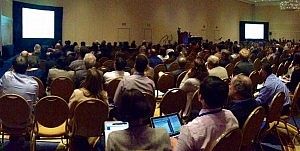The BET Bromodomain market is a meaty epigenetics topic we have followed for several years now, including a look at the space back in 2013 on the old Pharma Strategy Blog (Link). The last update on this was ironically at AACR last year when we discussed MYC and bromodomains (Link).
 In a remarkable tale of two cities in real life, two companies we discussed in those posts – Constellation Pharma and Tensha Therapeutics – have had markedly different fortunes since then. Roche decided to end their collaboration with the former and went on to acquire the latter instead.
In a remarkable tale of two cities in real life, two companies we discussed in those posts – Constellation Pharma and Tensha Therapeutics – have had markedly different fortunes since then. Roche decided to end their collaboration with the former and went on to acquire the latter instead.
Since we first wrote about bromodomains and BET inhibitors, the niche has exploded in a wildly stunning way… More drugs in the pipeline, more tumour targets being explored, and even novel combinations being evaluated preclinically for synergistic or additive effects. Even I was surprised by how competitive this niche has become based on the offerings at AACR this year.
With all the wealth of new data at the AACR annual meeting and also some other recent presentations I’ve attended elsewhere, it’s time for a more in-depth look at the BET/Bromodomain landscape.
Who are the new players, which tumour targets are now being evaluated, which combinations might be useful?
A word to the wise – this is neither a nerdy science post nor a comprehensive literature review – instead we take a look at the emerging landscape from a new product development perspective.
Science has been absolutely critical to success in all of the cancer therapeutics from targeted therapies to immunotherapies that have emerged in the last decade.
It really doesn’t matter whether you come from a marketing and commercial organisation or the investment community – if you want to make great decisions, you need to understand the basics of the science underpinning the R&D, where the strengths and weaknesses are. The alternative is play Roulette and put everything on Black 11 as a euphemism for whichever company/product/target you have an interest in.
To learn more about this burgeoning niche in epigenetics, subscribers can log-in.
This content is restricted to subscribers
 With the Jounce-Celgene announcement that the ICOS agonist, JTX–2011, is being returned and new priorities being pursued there is much to consider. There are quite a few nuances to this story to consider beyond the obvious that BMS already have an ICOS stimulating molecule.
With the Jounce-Celgene announcement that the ICOS agonist, JTX–2011, is being returned and new priorities being pursued there is much to consider. There are quite a few nuances to this story to consider beyond the obvious that BMS already have an ICOS stimulating molecule. It’s almost like a primordial soup from which future pipelines spring.
It’s almost like a primordial soup from which future pipelines spring. In a remarkable tale of two cities in real life, two companies we discussed in those posts – Constellation Pharma and Tensha Therapeutics – have had markedly different fortunes since then. Roche decided to end their collaboration with the former and went on to acquire the latter instead.
In a remarkable tale of two cities in real life, two companies we discussed in those posts – Constellation Pharma and Tensha Therapeutics – have had markedly different fortunes since then. Roche decided to end their collaboration with the former and went on to acquire the latter instead. It’s Day 6 of our Countdown to the AACR 2016 annual meeting in New Orleans. We’re at the halfway, 6 posts written and 6 more to go! Then it will be daily Live blogs from the meeting.
It’s Day 6 of our Countdown to the AACR 2016 annual meeting in New Orleans. We’re at the halfway, 6 posts written and 6 more to go! Then it will be daily Live blogs from the meeting. At SITC in Maryland this weekend, there were plenty of packed presentations and discussions on both of these classes of agents, so this is a good time to explore the idea of immune stimulators further based on the latest data we heard.
At SITC in Maryland this weekend, there were plenty of packed presentations and discussions on both of these classes of agents, so this is a good time to explore the idea of immune stimulators further based on the latest data we heard. Many of us are unlikely to forget the fascinating sequence of photos shown by Levi Garraway (Broad/MIT) two years earlier at the same conference, when he highlighted the before and after impact of vemurafenib therapy on a patient with advanced melanoma in glorious technicolour. Sadly, the subsequent photo six to nine months later showed that the lesions came back with a vengeance and the patient passed away.
Many of us are unlikely to forget the fascinating sequence of photos shown by Levi Garraway (Broad/MIT) two years earlier at the same conference, when he highlighted the before and after impact of vemurafenib therapy on a patient with advanced melanoma in glorious technicolour. Sadly, the subsequent photo six to nine months later showed that the lesions came back with a vengeance and the patient passed away.